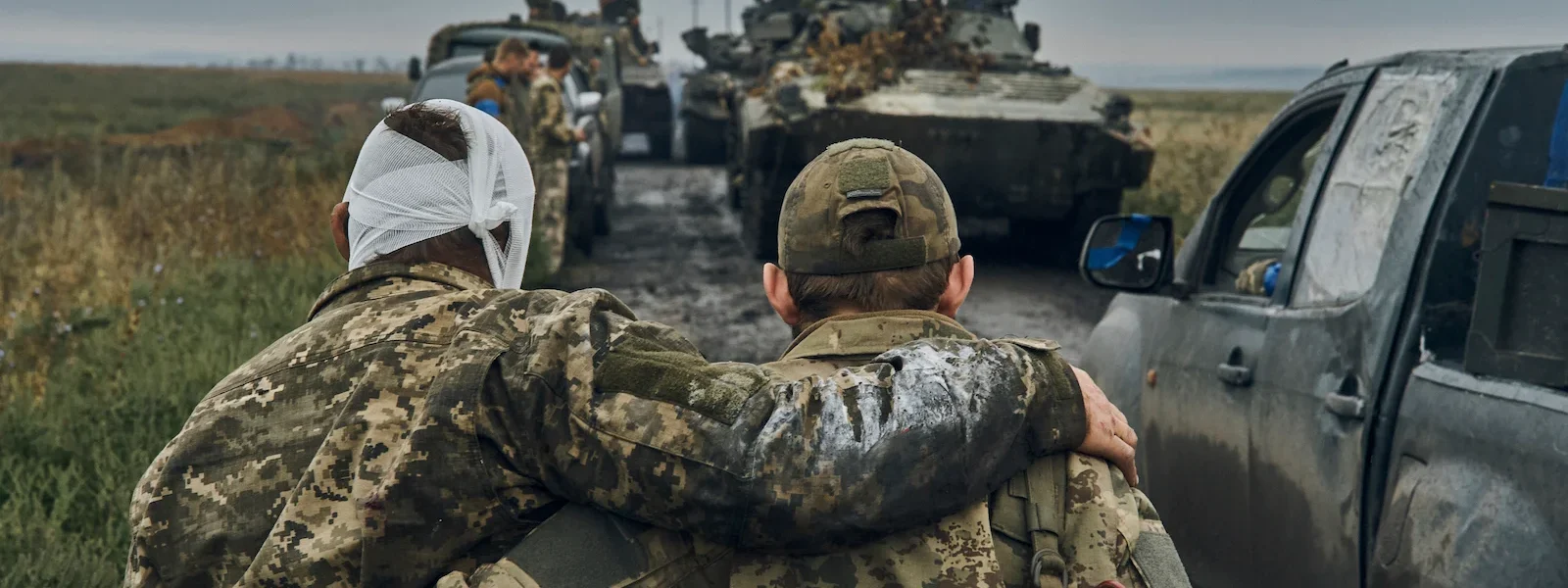The Ukraine war could be entering a dangerous new phase, but this time the escalation might come from Ukraine itself. After months of being held back, Kyiv now seems closer than ever to launching long-range strikes inside Russia. For a long time, the West—particularly the United States—had restricted Ukraine from using advanced missiles against Russian territory. However, this stance appears to be softening, signaling a potential turning point in the conflict.
U.S. Shifts Stance on Long-Range Weapons
On a recent visit to Kyiv, U.S. Secretary of State Antony Blinken, along with British Foreign Secretary David Lamy, met with Ukrainian President Volodymyr Zelensky. Following their discussions, Blinken hinted at a major shift in U.S. policy. “We have adjusted and adapted as the battlefield has changed,” Blinken said, implying that the U.S. is now open to allowing Ukraine to use its Western-supplied long-range weapons against Russia.
This change in approach could have significant consequences. If Ukraine is allowed to launch strikes deep into Russian territory, it would mark a new chapter in the war, potentially putting major Russian military assets at risk and destabilizing the conflict even further.
Long-Range Missiles: A Game Changer for Ukraine
Ukraine has long sought permission to use its advanced Western weaponry, including the Anglo-French Storm Shadow missiles and the American-made ATACMS. These missiles have a range of up to 300 kilometers (190 miles), making them capable of hitting critical Russian military infrastructure far behind enemy lines. Potential targets include airfields, command centers, logistics hubs, and fuel depots—assets that are vital for Russia’s military operations.
With as many as 250 possible targets in Russia’s vast military network, Ukraine believes that long-range strikes could cripple Russia’s ability to wage war, potentially forcing Moscow to scale back its invasion. Zelensky has described this strategy as essential for defending Ukraine’s sovereignty and bringing the war to a quicker end.
“We need to lift all restrictions on the use of American and British weapons against lawful targets on Russian territory,” Zelensky said. He believes that the ability to strike Russian soil could shift the balance of power in Ukraine’s favor and help achieve a faster peace.
Western Reluctance Slowly Fading
While the U.S. had been hesitant to approve long-range attacks on Russian soil, the pressure is mounting. Kyiv has already made some gains by pushing Russian forces back in Ukraine’s eastern regions, particularly around the Kursk area. However, the situation remains precarious, with Russian troops closing in on the city of Pokrovsk, a key Ukrainian stronghold near the Donbass region. Ukraine’s need for more effective, long-range weapons is growing urgent, both to defend its territory and to protect its recent gains inside Russia.
European allies, especially the United Kingdom and France, have been increasingly vocal about the need to support Ukraine’s push with more advanced weaponry. With U.S. backing slowly shifting, the door may soon open for Ukraine to launch strikes that could turn the tide of the war.
Iran’s Role: Adding to the Complexity
At the same time, Russia has been receiving support from Iran, which has supplied Moscow with short-range ballistic missiles, including the Fateh-360. The United States recently confirmed that Iran has shipped around 200 missiles to Russia, and there are reports that these could soon be deployed in Ukraine.
The West has responded by imposing fresh sanctions on Tehran, but these measures have had little impact on the ground. Ukrainian officials worry that the introduction of Iranian missiles into the conflict could lead to a further escalation, with more civilian casualties and intensified fighting.
Kremlin’s Response: Escalation or Retaliation?
Moscow has made it clear that any Ukrainian strike on Russian territory will be seen as a direct attack by the West. Russian President Vladimir Putin has drawn red lines in the past, threatening severe consequences if the conflict spills over into Russian soil. The most concerning possibility is a nuclear response, a threat Putin has repeatedly hinted at.
Russia’s Foreign Minister Sergei Lavrov recently warned that the West’s actions are pushing the world closer to a dangerous escalation. “This is blackmail. This is an attempt to pretend that the West wants to avoid escalation, but in reality, it’s deceit,” Lavrov said, accusing Western countries of encouraging Ukraine to widen the war.
Despite these threats, some Western leaders have dismissed Putin’s nuclear warnings as mere bluster. CIA Director Bill Burns recently called Putin a “bully” and suggested that his nuclear threats are part of a strategy to intimidate but are unlikely to materialize. Nonetheless, the risk of miscalculation remains high, and any strike on Russian soil could provoke a severe response from the Kremlin.
Potential for a Broader War
As tensions mount, the potential for the war to expand beyond Ukraine is growing. Long-range strikes on Russian targets would likely provoke a sharp retaliation from Moscow, possibly involving attacks on NATO members or other Western allies. Such a scenario could draw more countries into the conflict, transforming it from a localized war into a broader regional crisis with unpredictable consequences.
The West’s shift in strategy is a calculated risk. While it may bolster Ukraine’s chances of defending itself, it also opens the door to a wider conflict that could have devastating effects far beyond Ukraine’s borders.
Conclusion
Ukraine’s new ability to launch long-range strikes inside Russia marks a major escalation in the war. As the U.S. and its European allies reconsider their restrictions on advanced weaponry, the conflict is set to enter a new, more dangerous phase. The potential for miscalculation is high, and while Kyiv hopes that long-range strikes could hasten the end of the war, the risks of retaliation and wider escalation are very real. With both sides seemingly on a collision course, the next moves could determine the future of the conflict—and the broader stability of the region.






